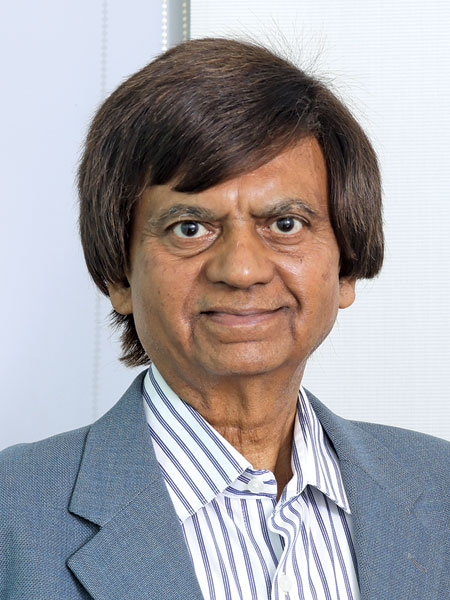We plan to increase our capacity from 10 million MTs to 16.5 million MTs within the next two years
With the major cement players going for an extensive capacity increase across India since the overall projected demand remains to be robust. The demand is mainly due to ongoing private projects (builders, contractors, RMC) and adequate spending on infrastructure projects and across state housing schemes.

- Krishna Srivastava
Director Marketing, Penna Cement Industries Ltd
How is the cement industry faring in terms of demand and supply?
With the major cement players going for an extensive capacity increase across India since the overall projected demand remains to be robust. The demand is mainly due to ongoing private projects (builders, contractors, RMC) and adequate spending on infrastructure projects and across state housing schemes. Currently, the cement capacity in India stands at well over 421 million MTs, with an estimated production of 298 million MTs in FY 21-22. With the new capacity addition, the capacity will increase by about 80 million MTs by FY 2024 and an increase of 9% in demand on a YoY basis.
As the Government focuses on infrastructure and affordable housing, how do you view the demand for cement and concrete industry in the next two years?
We expect continuous demand from the Government sector, with the Central Government concentration on the infra projects; a higher allocation of US$26.74 billion in roads and US$18.84 billion in railways, was done in the Union Budget 2022-23. The states have also been focusing on local and housing schemes under PMAY, which has helped boost the cement demand. With the next national election in 2024, we expect the same trend to be followed in the next two years.
Many cement companies are under margin pressure due to weak demand. What is your opinion, and when do you expect turnaround?
Most cement players are reeling under margin pressure mainly due to the increase in the input cost. Taking the example of coal, one of the main components, the prices have increased from US$70 PMT up to US$280 PMT; even the same sharp increase was seen in other components. Despite these input hikes, the industry could not pass on these escalations. Now that we are witnessing these costs normalising and with the cement bag price hikes, we hope to pass on the same by start of Q3 or Q4 so we can recover from the margin pressure. Additionally, all the companies strictly work on optimising their process to control the cost.
What role is technology playing in lowering emission as cement is a major polluting industry?
With companies working on encouraging efficient process to maximise their EBITDA margins, technology is playing a vital role in controlling the critical aspects and being able to help us bridge the gap. Taking an example, with enhanced process digitalisation in CCRs, helping to change any traditional levers such as fuel mix optimisation, improving WHR usage, installing VRM upon the typical ball mills for better energy efficiency, advanced analytics to be able to plug in any loopholes, developing of a unique port based logistics via sea route for reducing CO2 footprint and launching new products with better awareness concentrated on higher fly ash and GGBS usage.
What are the sustainability initiatives at the company in terms of products and manufacturing practices?
Some of the initiatives, taken up by us are as under:
- Increase in blended cement sales (PPC/PSC).
- Setting up WHR at plants to be able to manage the efficiency loss.
- Using of alternative fuels to be able to reduce the overall power cost.
- Evaluating and setting up plans for upcoming projects pertaining to renewable energy (solar/wind), to decrease the overall energy cost and lower dependency on conventional energy sources.
- Setting up a sea route logistics to be able to reduce the freight cost by 1/3rd and CO2 emissions to 4 gm/ton-mile via sea route as compared to emissions of 81.5 gm/ton-mile via road transport.
How is the company performing and what CAPEX plan do you have for the coming years?
With our ongoing projects, we plan to increase our capacity from 10 million MTs to 16.5 million MTs within the next two years. With this, we can be a pan-India player having our presence in over 18 states. An extensive CAPEX plan of well over Rs 2,500 crores has been planned and is getting allocated as and when required.
Hits: 0

















